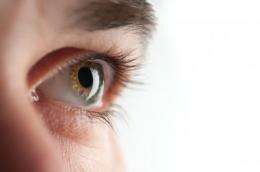Touch and vision vital for sight

Researchers at Monash University Gippsland hope to improve the sight of people receiving visual prosthetics, such as bionic eyes, by proving the importance of both 'touch' and 'vision' to how we see.
Traralgon-based academic George Van Doorn, along with colleagues Barry Richardson and Dianne Wuillemin, spent two years studying the theory that combining the way an object feels with how it looks, could improve the effectiveness of visual prosthetics.
They suggest that using technologies that combine the stimulation of both senses at once may allow the brain to more effectively receive and interpret electrical input from a prosthetic; helping a person learn to 'see' much quicker than if just one sense is focused on.
An article outlining their theory was published in the International Journal of Autonomous and Adaptive Communications Systems.
But while Dr Van Doorn, a lecturer in psychological studies and specialist in 'touch', hoped the study would lead to a shift in thought, he said this was proving more difficult than anticipated.
"Most people still believe using information from only one sense will be good enough (when developing visual prosthetics), so they don't bother combining the two (vision and touch). While this might be true, we believe success is more likely with more sources of sensory information," Dr Van Doorn said.
"I wouldn't have thought it was a revolutionary idea, but it appears to be, because we've certainly hit a wall in taking it further. I think many put it in the 'too hard' basket, which is a shame given the potential."
Dr Van Doorn said it made sense that if touch was paired with the low-quality visual information people with visual prosthetics receive, it could help them see, because most of what we perceive is based on information from multiple senses.
"If you're a person who's never seen anything, and you get a bionic eye, basically what you can see initially is just little spots of light or dark. Because these people have never had vision, interpreting this visual information is extremely difficult, which is why we're suggesting that touch be used in conjunction with vision, in the hope that this will help the recipient of a bionic eye learn to "see" faster."
"For example; you could have one camera stimulating the retina or cortex of the eye, and another stimulating the tongue at the same time so people could get information from both senses at once. Then, if they miss some of the information provided by one sense, they may get it from the other. This adds to the information sent to the brain."
Dr Van Doorn said despite the difficulties the researchers were facing in taking their study further, they were still hopeful of receiving grant money and teaming up with an Australian group involved in bionic eye development to undertake practical work to test their theory.













